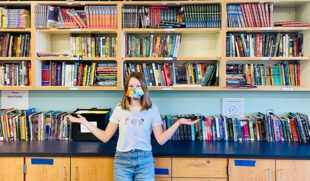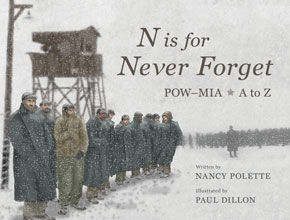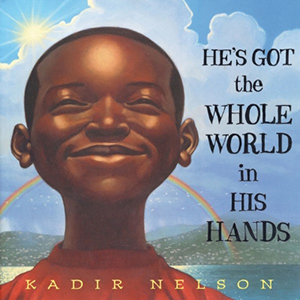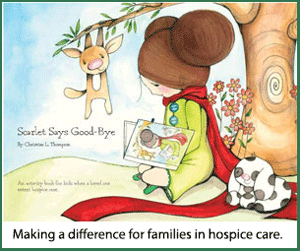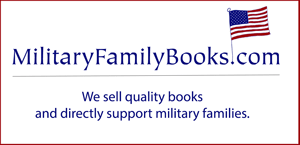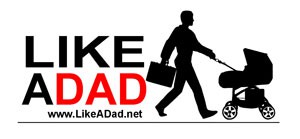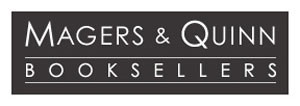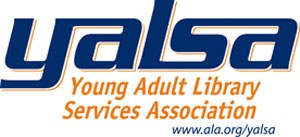“Ooh, we gotta get this one processed because I want to read it!” exclaims an eager young librarian at Ogdensburg Free Academy (OFA), a small school in upstate New York. This particular library is a little different from the rest—it’s maintained by eighth-grade students in Bridgette Havens’s English Language Arts class.
At OFA, students are the doctors and librarians for the books in the classroom, responsible for repairing any damaged books and organizing the classroom library. The school’s innovative reading and writing program is built on the Units of Study workshop model written by Lucy Calkins. It allows students to become book club gurus and reading extraordinaires by giving them freedom over the books they can read and write about.
Ogdensburg’s program emerged out of a need to better respond to student needs in the classroom. After a few years of trying out standard New York State modules and not seeing significant results in reading comprehension, a team from the district visited Lucy Calkins and found that her Units of Study workshop model matched what they were looking for, explains Ogdensburg reading coach Brandi Harris. “At this point, we are in year two of a full reader and writer workshop for grades K-8 and we have been working at this for eight years. The high school levels are just getting started.”
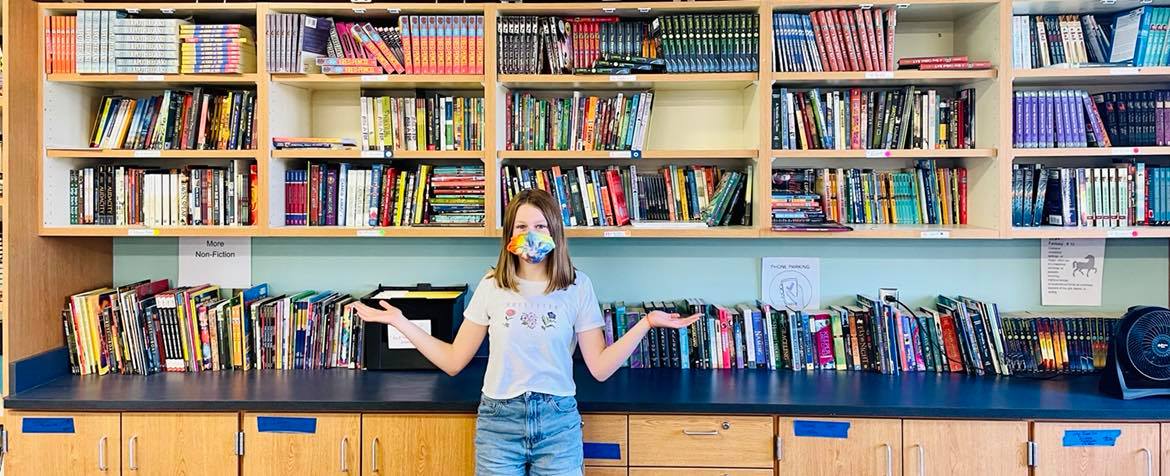
Student Maeve Putman gets ready to explore the library in Bridgette Haven’s 8th grade Language Arts classroom. Shelves are filled with books that span numerous genres and interests. Students maintain the classroom library, labeling and sorting each book by common identifiers like genre and Lexile level.
In a break from traditional learning approaches, Ogdensburg students are encouraged to explore books of their choosing across genres or interests. In Bridgette’s class, students might still read parts of certain books together like Crash by Jerry Spinelli or The Things They Carried by Tim O’Brien, but most of the readings are individually chosen by each student based on the topics they’re most interested in.
“It has made me more of a consistent reader and has helped me stay on track and read bigger books as I go,” says Tegan Frederick, an OFA student. “It is just nice to have more choices.”
Unlike the ‘one class novel’ model where everyone in the class is given the same book to read, each student can choose the book that speaks to them.
“That is very powerful. I love that kids are given so much freedom to choose,” says Bridgette. “We use those [one class novels] in small pieces as mentor texts but it’s not the focus of the class period.”
Providing an entire library for the class also exposes students to more topics and concepts than could otherwise be covered in one novel. “My classroom library has a lot of diversity. That alone not only supports other classrooms but the entire community [too],” says Bridgette. Books from her library connect to learning that’s happening across subjects and classrooms, so “it makes [the students] more well-rounded.”
A full lesson takes only 10 to 15 minutes, so most of the class time is spent in workshop mode, where students get to independently explore. With this kind of structure, each student gets immediate feedback on their reading and writing. Rather than trying to pack lots of information into the lesson and forcing students to do the engaging work at home, teachers in Ogdensburg center student interaction and provide space to read inside the classroom.
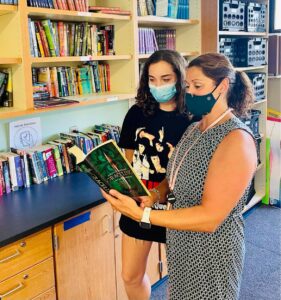
Delia Payne (left) talks with Mrs. Havens about book genres. Exploration and freedom are essential to Ogdensburg’s reading approach.
“We’re able to conference with just about every kid every day. That hasn’t always been the case in previous curricula,” says Bridgette. “I feel like it really helps me build relationships with the students. When I sat in an English classroom, I would be working on something for days before a teacher might be looking at it and giving me direction. They are getting feedback moment-to-moment on what they’re doing…[which] is so important for them to grow as readers and writers.”
The students certainly understand the benefits they are receiving from this instruction method. They recognize that they are stronger readers—and are more motivated to pick up a variety of books.
“It has made me a more diverse reader. I enjoy reading new genres and learning more about those genres,” says Maeve Putman, an OFA student. “I like to write realistic fiction and my reading has made my writing more descriptive.”
The students’ interest in reading together carries into life outside the classroom, too. The middle-school students form their own organic book clubs, coming together by genre or by author and getting excited when they run into a fellow student who chose the same book they did. Of the more than thirty books some of Bridgette’s students read each year, there are a few class favorites. They love books by Jason Reynolds, Kwame Alexander, Tim O’Brien, and Jerry Spinelli, as well as several dystopian and sci-fi novels.
“If they know [the book] is part of a series, they tend to jump into it more. I think that’s because they are voracious readers. They want whatever we can give them,” says Bridgette.
Bridgette attributes a large part of this interest in reading to the feeling of independence her students have as they build their own education. “When kids have choice, they buy in. It makes them stronger readers and writers. If they’re in a topic that they understand and love, they’re more focused.”
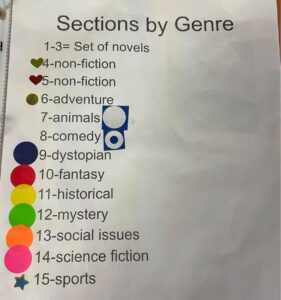
A student-created genre labeling key is used to identify where a new book should go in the classroom library when it arrives.
In addition to improving critical reading and writing skills, the program also teaches organizational techniques and inventory management. The books in Bridgette’s classroom library and the school library are sorted by common information like genre, title, and Lexile level. When the class receives a new box of books, the students look up the book information using a website called Booksource, add stickers to the books, and check off inventory sheets before putting them on the shelves. Organizing by genre and explaining how the library works “helps the students find things a little easier than the way libraries are traditionally set up…and explore genres that they haven’t read before,” Bridgette says. “It helps kids because of the continuity of finding [books]. Often, when they finish a book, I’m able to suggest where they should go next in the same genre or a different genre that we have right there in the room. They’re able to go to the shelves and find exactly what they want.”
The classroom library helps students appreciate the value of maintaining the books, too. If a book is damaged, it goes to the “book hospital” where a student has to fix it before putting it back on the shelf. “I’ll have kids that will come in during a study hall and say, ‘Do you have any books to put away?’ They’re looking for a positive way to spend their time if they don’t have work to do,” Bridgette says. “They’re feeling independent, they’re feeling part of something. That has its own value.”
The wide variety of books in the classroom does present OFA teachers with a few unique challenges, but the payoff is well worth it. “It’s hard sometimes to keep track of what’s going on in their books to be able to have those enriching conversations. I’m well read. I’ve read a ton of books, but I haven’t read all of them. Sometimes I have to stop the kids and have them walk me through what’s happening in their book,” Bridgette explains. “It can be a little overwhelming…but watching them grow and flourish in what they love is pretty amazing. Allowing them choice is exhilarating, really a breath of fresh of air for me to watch.”
The tumultuous changes during the coronavirus pandemic and shifts from virtual to hybrid to in-person learning created many challenges for the program. The COVID-19 pandemic meant losing reliable access to the books students used to have right there in the classroom.
“In the community we live in, a lot of students don’t have access to books at home. Many don’t have a way to visit the public library either,” says Bridgette. It was a testament to the fact that proximity of books matters to keeping kids interested in reading. “When we couldn’t get books in kids’ hands the way they wanted to—in a hurry—but it took a day or two instead, or when they were reading online, that spoke volumes. They were frustrated. Having the library right there is a fantastic resource for them.”
Thankfully, the short teaching lessons did work well during the period of virtual learning. “Because these lessons are short and concise, I think that has lent itself to some success in this format because I can keep their attention for 10 to 15 minutes. They would know that after 10 to 15 minutes, they could get on with the work and get their homework done so they weren’t working outside of the school day. I think in a lot of ways they appreciated that,” says Bridgette.
OFA did also find some online book resources like myON and Sora to help, but for many students, it just wasn’t the same without a physical copy of the book. The workshop model involves writing notes, or jots, on Post-it notes that go inside the classroom books, and that doesn’t work well when the books are online. Students like to make the books their own. “I realize we’re living in a very digital world, now more than any time before, but I think holding a physical book in your hands is still the most valuable way to read and experience reading,” says Bridgette.
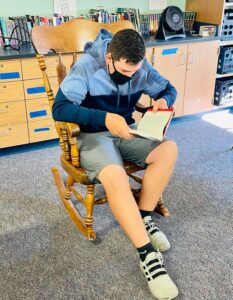
Ethan Bouchard is one of many Ogdensburg students who reads more than 30 books per year using the classroom library. He loves books by Tim O’Brien, among other authors.
The program exceeds what the district was hoping for in many ways. Reading test scores and comprehension are climbing along with the passion Ogdensburg students have for books. Even in a pandemic year, when Bridgette wasn’t sure what was going to happen because of all the change, her students have moved from eighth grade readers to collegiate level comprehension. “They’re not even on the charts for the testing,” she says.
There’s a lot of positive reinforcement and celebration to go around. “They’re so proud when they make gains. When they hit those [reading] goals, they’re ecstatic,” Bridgette says. “‘Can I bring this paper home and show it to my mom? Please?’ A lot of eighth graders don’t [normally] ask you that question.”
An important part of the program’s success is the effort each teacher puts into connecting students with books, no matter the distance. When the COVID-19 pandemic limited the interaction students could have with their classroom, and the books in it, Bridgette and other OFA teachers found creative ways to get materials to their students. They set up pickup areas in the school’s main lobby or even drove books directly to the students’ homes. “Getting books in kids’ hands has been a challenge, but it is something that we’ve been able to do,” says Bridgette. “When kids ask me for books, I don’t ever say no. I find a way to get them the books they want.”
Now with books in hand and in-person learning starting again, Ogdensburg’s young librarians are ready to rediscover reading in the classroom. That’s all for this story—but there’s always another one waiting on the shelf.
Resources:
Units of Study Workshop
Web: UnitsofStudy.com
The Teachers College Reading and Writing Projects (TCRWP)
Web: ReadingandWritingProject.org
TW: @TCRWP
Private FB group for middle and high school teachers using Units of Study model: /groups/TCRWP.MS.UOS/
Private FB group for educators to share tips for teaching reading: /groups/TCRWP.RUOS/
Ogdensburg City School District
District Website: Ogdensburgk12.org
FB: @OgdensburgCitySchoolDistrict
OFA School Website: OFA.Ogdensburgk12.org
Photos courtesy of Bridgette Havens.
Alexander Pavlicin is a writer and a master’s degree student who loves to share a good story with others.
This article was first published July 2021.

